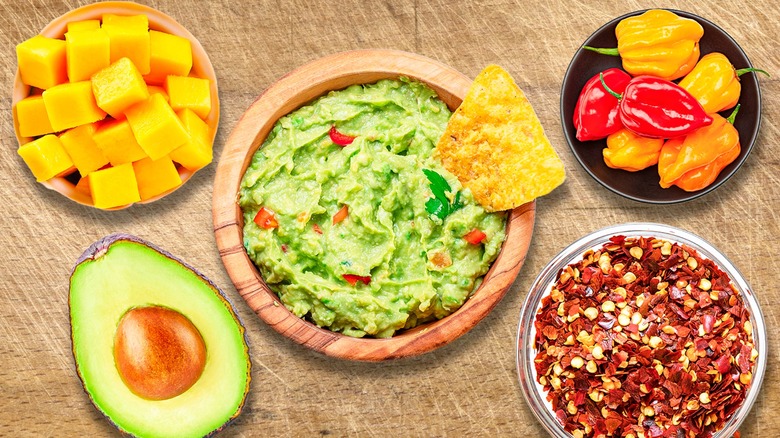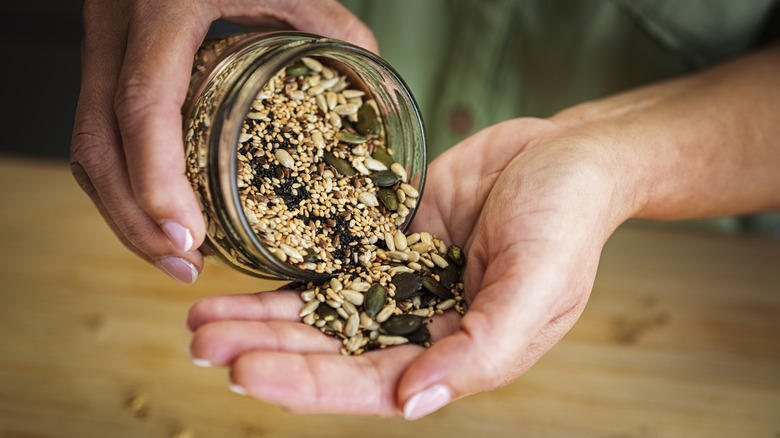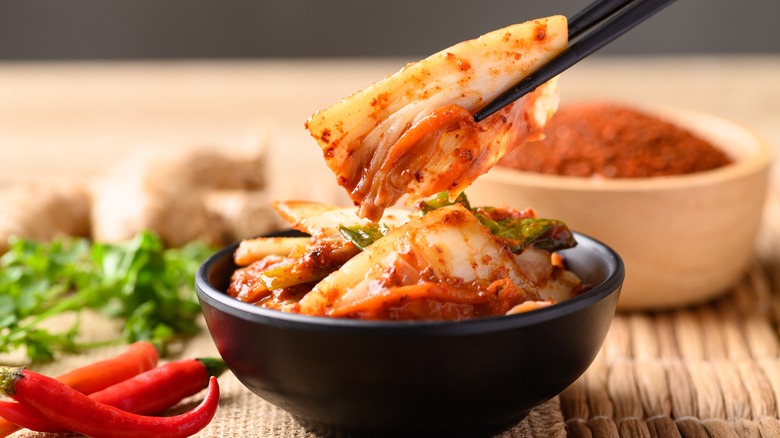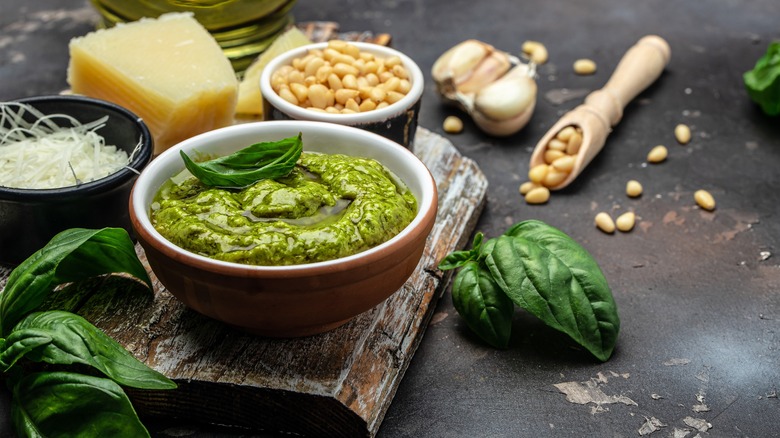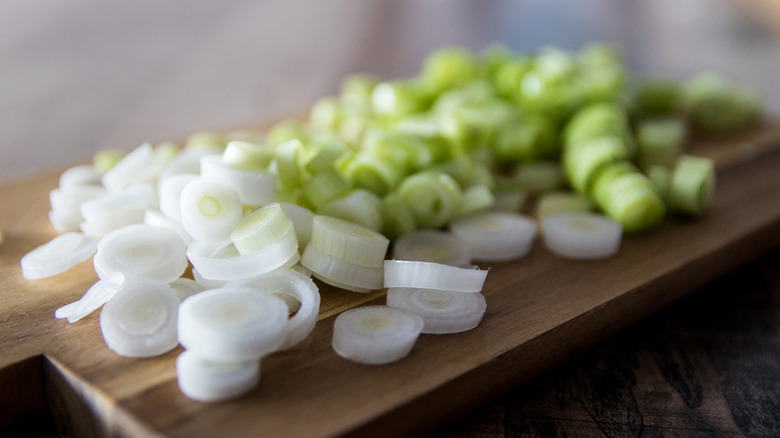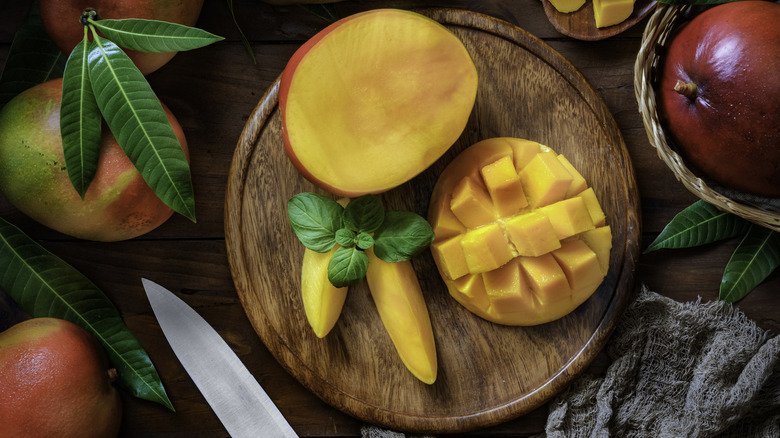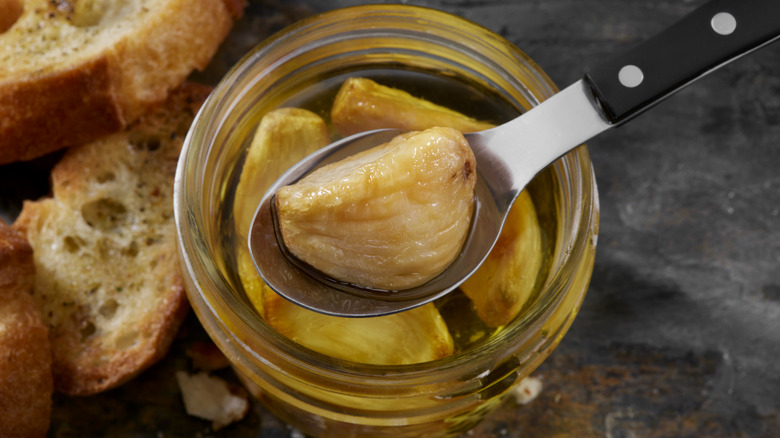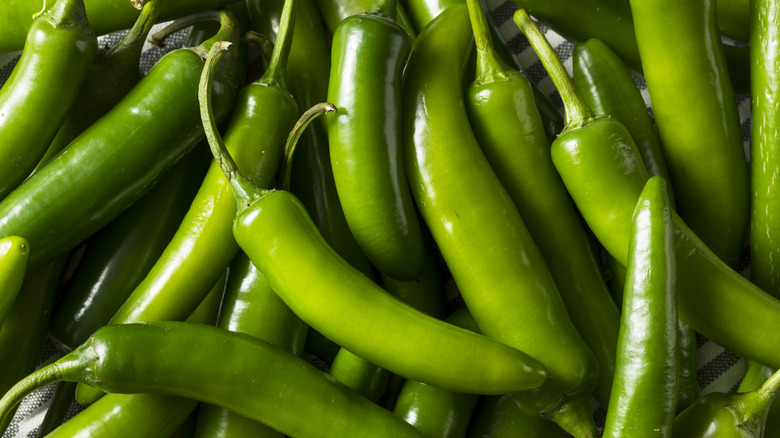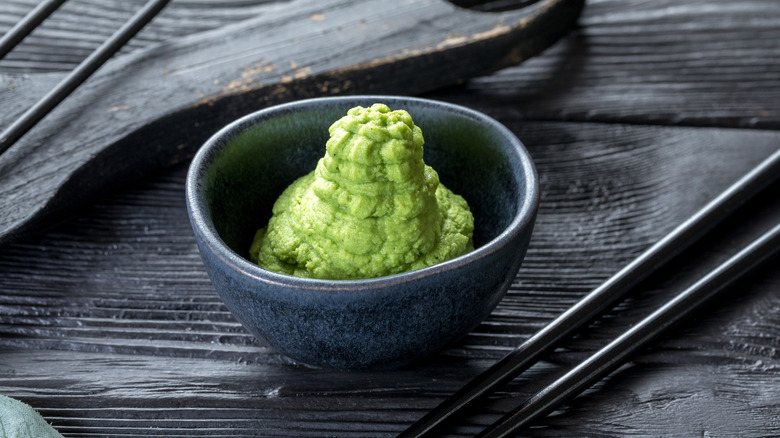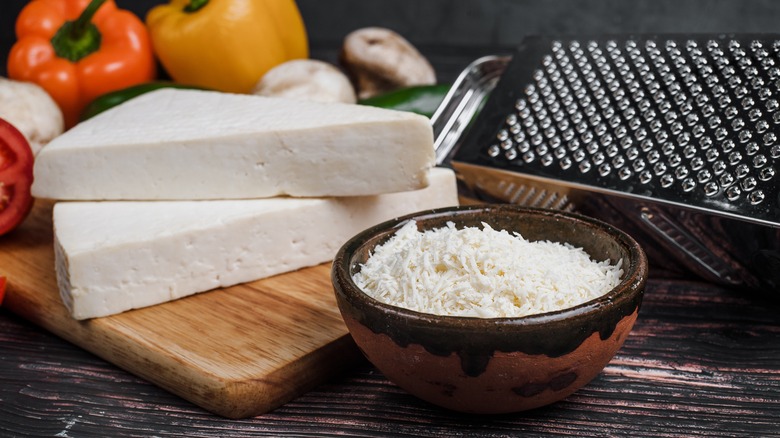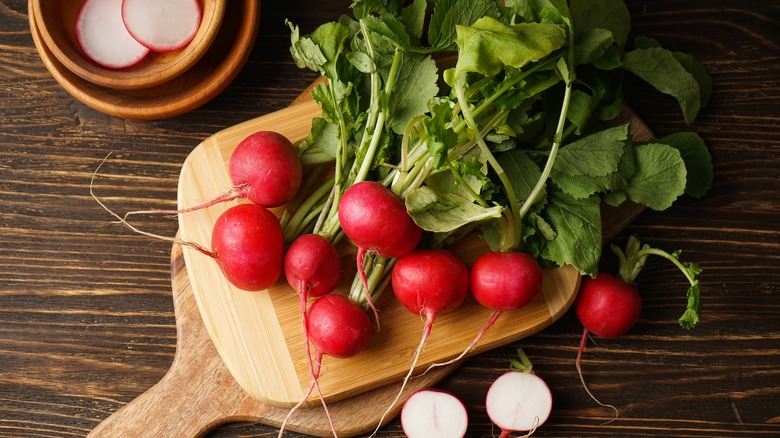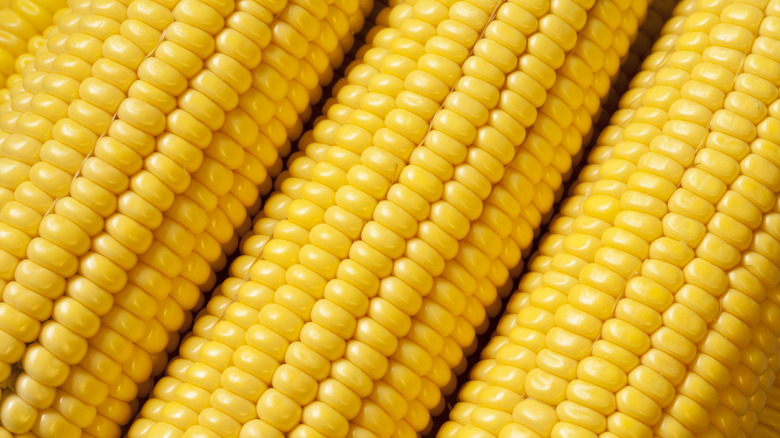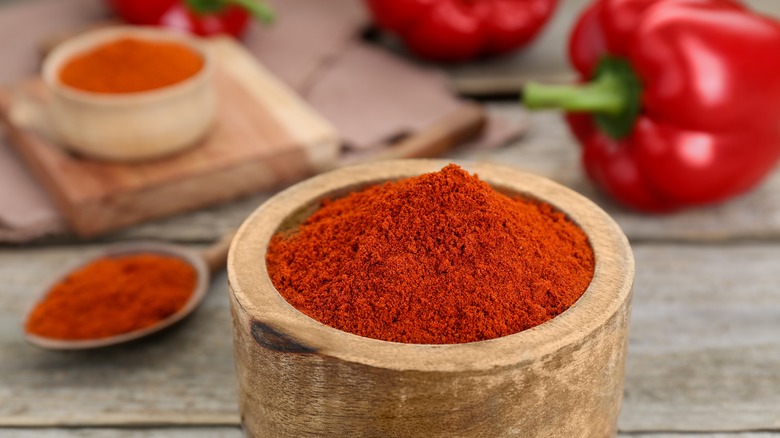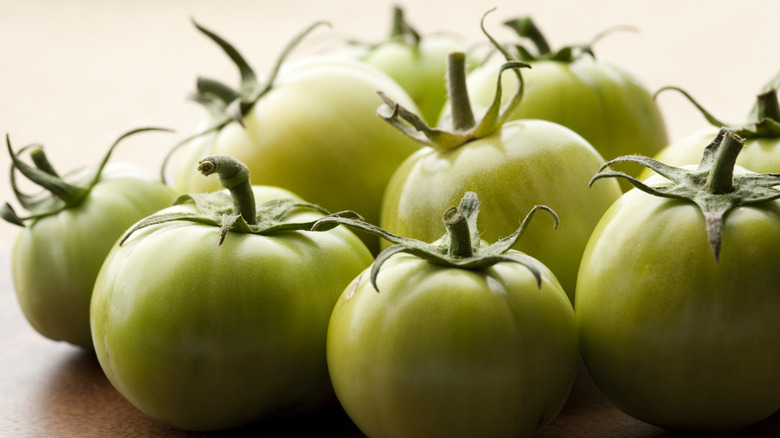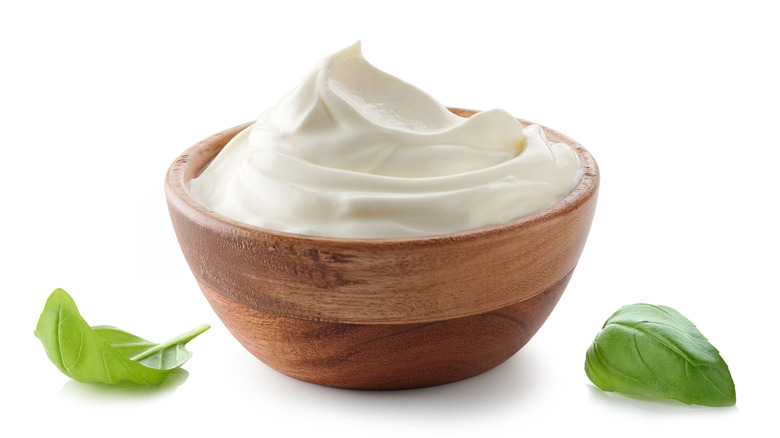14 Expert-Approved Ways To Upgrade Your Guacamole Game
It's healthy, it's creamy, it's packed with flavor, and it's the one thing that will make nachos, tacos, toast, and deviled eggs taste even more delicious. Guacamole was originally made by the Aztecs, who called their creation āhuacamolli, meaning avocado sauce, and people around the world still can't get enough of it. The original recipe contained little more than the creamy green fruit, but when the Spanish arrived in the 16th century, new ingredients such as garlic were added.
These days, there are countless ways to make guacamole, from a quick combination of a few ingredients to deluxe versions with pomegranate seeds and roasted chili peppers. There are so many options that it can be hard to know where to begin or how to avoid diluting the perfection of the original recipe with too many flavors. According to Yvette Marquez-Sharpnack, the founder of the Mexican food blog Muy Bueno and author of the cookbook "Muy Bueno Fiestas," "It's all about finding that perfect harmony of textures and flavors." Her advice is to balance the creamy avocado with crunchy elements and add a hint of spice and acidity.
Mely Martinez, the cook and recipe developer behind Mexico In My Kitchen, noted that timing is also important. "If you would like to add new ingredients to your guacamole," she said, "Add it at the end of the process of preparing it. Adding these extra ingredients [at] the end ensures that they keep their shape, and thus their flavors and textures."
Here are some ways you can take your guacamole to the next level.
1. Nuts and seeds
All three of the experts we spoke to mentioned pepitas (otherwise known as pumpkin seeds) as an increasingly popular option for adding to guacamole. When toasted, pepitas are full of flavor and have a crunchy, buttery texture that complements the silky texture of the avocado. David Choi also suggested swapping pepitas with toasted sesame seeds, saying that it would add a bit more nuttiness and enhance the presentation of the dish. In addition to these options, you can use any nuts or seeds as a garnish. For a Southern twist, pecans are perfect, as this roasted poblano and pecan guacamole recipe from Tasting Table proves. Buttery and toasted, they are just as delicious with avocados as they are in pies and cookies.
When adding nuts, it's best to stick with Mely Martinez's advice and add them last. Better yet, wait to add them until you are about to serve the guacamole and only use them as a garnish instead of mixing them into the dip. As soon as they come into contact with moisture, they will start to get rubbery instead of crunchy.
2. Kimchi
One of the best ways to enhance a familiar recipe is to turn it into a fusion with another cuisine. David Choi is an expert in the field. As the founder and owner of the Korean-Mexican chain Seoul Taco, he has plenty of experience bringing Asian influences to Central American recipes. When asked how he would upgrade guacamole, he said, "I'm a big fan of kimchi, which is a Korean fermented cabbage dish that packs a punch of spice and tangy flavor, on pretty much anything. It would be a nice addition to guacamole to amp up the acidity and add a bit of crunch."
Kimchi is available to buy at many grocery stores, but you can also make it in your own kitchen. Our easy homemade kimchi recipe takes only 45 minutes to make and breaks down the process into easy to follow steps. When adding it to your guacamole, wait until the end, as Mely Martinez suggested, mixing in only a teaspoon at a time and tasting as you go. The tangy flavor of kimchi is powerful, and you don't want it to overwhelm the mild creaminess of the avocado. Another option is to use it as a garnish, adding a teaspoon to the top of the guacamole instead of mixing it in.
3. Pesto
Garlic and herbs are frequently added to guacamole, but Yvette Marquez-Sharpnack has a particular way of doing it that will take the flavor to the next level: pesto. She explained that its vibrant flavors complement the creaminess and richness of guacamole, which is just begging for some powerful ingredients to liven it up. Pesto also has the benefit of deepening the vibrant green color of guacamole instead of diluting it.
When adding it to the recipe, Marquez-Sharpnack advised starting with about half a tablespoon of pesto per avocado. You may find that this yields plenty of flavor, or, you might love the garlic and basil so much that you want to add more. Keep tasting it to make sure the flavors are harmonious.
If you'd like to make everything from scratch, our basil pesto recipe comes together in just 10 minutes and tastes infinitely better than anything you can buy at the store. Nothing beats the peppery intensity of fresh herbs, and when added to the creamy taste of guacamole, it's a match made in heaven.
4. Green onions
The perfect guacamole recipe might look simple, but it's a delicate equilibrium between many elements. As David Choi explained, "Guacamole needs a good balance of salt, crunch, acid, and texture to mix with the cool creaminess of the avocado. This often comes from ingredients like onion, lime juice, and jalapeño peppers, which have a place in Korean cuisine, too." One of the easiest ways to experiment with new ingredients, he continued, is to think of each element in terms of categories and swap them around within each group. For example, instead of using red onions, which are common in guacamole recipes, use green onions.
Compared to red onions, green onions (also called scallions) have a fresher, less pungent flavor and more pronounced crunch. They are often used as garnishes and provide a pleasing pop of color and a distinctive oniony flavor that doesn't overwhelm a dish. You can either chop them and mix them into guacamole or sprinkle them on top. Either way, they'll provide plenty of texture and flavor. If you're swapping red onions with green onions, you may want to add more of the latter since they have a less powerful flavor.
5. Fruit
Salt, acid, and heat are often added to guacamole to provide some brightness and flavor to the buttery, mild taste and texture of avocado. However, as Yvette Marquez-Sharpnack explained, you might want to add a bit of sugar as well. "The sweetness from fruits like pineapple or the burst of flavor from pomegranate seeds not only adds a delightful contrast to the creamy avocado but also brings a whole new level of complexity to the dish," She said. "It's like a flavor explosion in every bite! Plus, it's not just about taste — it's about texture too. The subtle crunch from the pomegranate seeds or the juicy bursts of pineapple elevate the overall experience."
In addition to making guacamole with pomegranate seeds and pineapple, there are many other ways to sweeten up the beloved avocado dish. A hint of watermelon will inject a breezy, cooling summer flavor, while mango and papaya will intensify the tropical flavors. Even a dash of honey can make a world of difference. Start small and taste as you go to make sure you find the perfect balance.
6. Roasted garlic
Following in the footsteps of David Choi's suggestion of grouping ingredients into categories and swapping them within each group, you could substitute raw garlic with roasted garlic. Any time you add a grilled or roasted element to a recipe, it changes the flavor of the entire dish, but substituting raw garlic for roasted garlic provides more than just a caramelized, nutty flavor. When used sparingly, raw garlic can provide a deliciously spicy, savory taste. However, it also has a habit of dominating the taste buds and sticking around long after you're done eating. Roasted garlic is the ideal solution. It adds all of the distinctive garlic flavor you could wish for but without the lingering pungency.
Although roasting garlic is not as efficient as chopping or pressing it, it can easily be made in advance so you're not adding hours to your guacamole recipe. Simply slice off the first quarter inch of a whole head of garlic, drizzle the rest with olive oil, wrap it in tin foil, and let it roast in an oven no hotter than 375 degrees Fahrenheit for 45 to 60 minutes.
7. Chilis
Aside from lime juice and salt, chilis might be the most common addition to guacamole — and it's no wonder. There are dozens (even hundreds) of options, from the mildest Anaheim pepper to the hottest Ghost Pepper. According to Mely Martinez, jalapeño and serrano peppers are the most popular options for making guacamole, but in Mexico, different regions have their own preferred sources of heat. "In the North of Mexico," she explained, "[A] small pepper called 'Chile de Monte' is added when it is in season. In the South, Habanero pepper is added for those that love its flavor and heat level."
Another option is to swap fresh peppers for dried. David Choi suggested trying Korean red pepper flakes, which are milder and sweeter than conventional ones. Look for red pepper flakes labeled as Korean chili flakes or Gochugaru, and make sure to start with a small amount so you don't end up with too much heat.
8. Wasabi
You can never go wrong with adding a spicy element to guacamole. While chili peppers are the go-to option given the Central American origins of the recipe, there are other possibilities out there that are worth a try. For example, you might want to try wasabi, a Japanese type of horseradish that is related to mustard. If you've ever had wasabi paste served alongside sushi, you'll know that this stuff is not messing around. It may not have the distinction of being measured on the Scoville scale alongside chili peppers (this is due to its lack of capsaicin rather than its heat credentials), but it will make your eyes water and your nose burn.
Given its spiciness, it should only be used in small quantities and only if you're serving it to people who like a bit of a burn. In fact, it's best to use a recipe to ensure you don't overdo it. This one from Tasting Table for ginger and wasabi guacamole only calls for a scant one teaspoon of the fiery green paste per three avocados.
9. Cheese
Cheese is the answer to many recipe woes. Whether you need flavor, richness, an added layer of texture, or a visual cue to get the mouth watering, it has your back. Guacamole is not an obvious candidate for cheese because of the creaminess and fat the avocados already provide, but there are certain cheeses that will, in fact, take the dish to the next level.
Rather than opting for something that is usually melted, like Cheddar or Gouda, choose a hard, crumbly option. Goat cheese provides a tanginess that can take the place of bolder ingredients like kimchi and radishes when you want something with an edge without scaring away more conservative eaters. Feta is also a strong candidate, with a saltier, more crumbly texture than goat cheese and less tanginess. If you want to keep the Mexican theme of the recipe, opt for queso fresco, a cheese made with fresh cow's milk that features in our recipe for healthy guacamole with pomegranate seeds. With a crumbly texture, creamy flavor, and the slightest hint of tanginess, it will add depth to the flavor of your guacamole and complexity to its texture without stealing the spotlight.
10. Radishes
Radishes might not be the most conventional addition to guacamole, but they add a surprising flavor and a pop of color that stand out among other guacamole recipes. The pink root vegetable has a strong, peppery heat that is nothing like the flavor of onions, garlic, or even wasabi. People who don't like the heat of a jalapeño might love the spiciness of a radish, especially with the fresh crunchiness that comes with it, making it the perfect option for anyone who doesn't like chilis. Radishes also provide a striking pink outer layer and pure white interior, making them stand out in the otherwise green dish. For a summery spin on guacamole, they are the perfect ingredient.
If you want the flavor of radishes to suffuse the whole recipe, chop them into small pieces and add them with the onions, tomatoes, or whatever other mix-ins you're using. If you're going for a wow-factor with the presentation, slice them thinly in rounds and sprinkle them on top of the dish.
11. Corn
One way to add a sweet element to guacamole without adding fruit or sugar is to throw in a handful of sweetcorn. Many recipes in Mexican cuisine rely on corn, from the tortillas in tacos to the mouth watering street food called esquites. Corn provides juicy bursts of sugar when added to guacamole, giving variation to the creamy texture and enhancing the flavor with its irresistible sweetness. You can roast or grill it first to give it a smoky flavor, such as in this grilled corn and avocado guacamole recipe from Tasting Table, or simply give it a quick boil. If you want to incorporate the flavor into the avocado mixture as much as possible, lightly crush the kernels before adding them, making sure not to lose any of the juice.
David Choi is a fan of adding corn to guacamole, saying that it deserves more appreciation. "We love to use corn in our Corn Elote Quesadilla at Seoul Taco," he said, "[It] gives the dish a bit of crunch and sweetness, especially paired with spiced Cotija cheese. Both of these ingredients would make an awesome elote guacamole, and it adds a pop of color to the presentation, too."
12. Spices
Spices are the most efficient way to inject a burst of flavor into a dish, and guacamole is no exception. There are an almost infinite number of options, some more adventurous than others. If you want to play it safe while making an impact, choose cumin. Although the seed originates from the Mediterranean, it is one of the most common spices used in Mexican cuisine. You might not be able to identify it in a recipe, but once you add it, the dish will come alive with restaurant-worthy flavor. The key is to be sparing so that it doesn't become the dominant flavor.
Other popular options are cayenne pepper and paprika. Both add heat in place of actual chili peppers, saving you the chopping time and not interfering with the texture. A light touch is necessary with these options as well. This crave-worthy guacamole recipe from Tasting Table, for example, only calls for half a teaspoon of cayenne or paprika per four avocados.
If you want to try something unconventional, add a pinch of curry powder. Warming, earthy, and faintly sweet, it will add an unexpected kick to the dish that, if added sparingly, will be so subtle that people will be asking you for the secret ingredient. You can also just own the Mexican-Indian fusion and add enough to transform the entire character of the dish if you want something bold.
13. Green tomatoes
Juicy red tomatoes are often found in guacamole recipes. They add a refreshing, sweetly acidic note to the dip, along with added moisture and color. But Mely Martinez has another option. "Green Tomatoes (or 'Tomatillos') are not very common in guacamole," she conceded, "However when added to guacamole, they give a hint of acidity to it and help reduce the oxidation that often happens to the avocado. If you would like to add it, chop it very finely and gently mix it with the mashed avocado."
Although green tomatoes are not common in guacamole, their anti-oxidation properties serve a similar purpose to lime juice, which, Martinez noted, is not traditionally added to homemade guacamole in Mexico. She said that adding lime juice may have been initiated by the restaurant industry as a way to delay the oxidation process rather than as a way to enhance the flavor. In fact, you might want to stop using lemon or lime in your guacamole altogether. Both have strong enough flavors to dominate the avocados, leaving you with their creamy texture but none of their mild flavors. Tomatillos can split the difference, delaying oxidation slightly without drowning out the delicate flavor of fresh avocados.
14. Sour cream
Avocados are known for their creaminess, but they are still almost 75% water. This doesn't mean that they need anything to make them richer — any fan of guacamole can attest that the green fruit does just fine on its own, thank you very much — but it does mean that adding a little more fat will have a noticeable impact. Cheese is an ever-popular source of richness, but in the case of guacamole, it also adds a textural component, and if you want the added creaminess to seamlessly blend with the mashed avocado, you'll need to use something with a similar consistency. Mayonnaise is the unexpected ingredient that will upgrade your guacamole. With its subtle flavor and creamy texture, it adds richness to the recipe, giving the impression that you've discovered the world's silkiest avocados.
Sour cream is a more attention-grabbing option. With its tanginess and silkiness, it enhances the flavor of the avocados and may even help keep your guacamole green thanks to its acidity. If you're just looking for flavor and richness, adding a dollop of sour cream to the top of the dip can also enhance its presentation.
